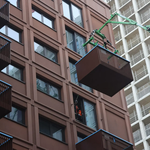To a large degree, all of this is already being done. Trains from the west are the ones that get stored at Don, and wherever possible head back westbound in the afternoons. Same goes for trains to and from Bathurst North Yard. There are a number of trains - mainly Kitchener/Georgetown runs - that continue east to Scott Street to change directions and run out of service during the morning rush hours.
What is going to be interesting is the upcoming April schedule changes. It seems that there is going to be a LOT more mid-day service running, seemingly in an effort to keep those trains out on the road and not in yards. Apparently the new CEO has demanded a 25% increase in the number of trains running this year, and it looks like this will go a long way towards meeting that objective.
Dan
Toronto, Ont.




